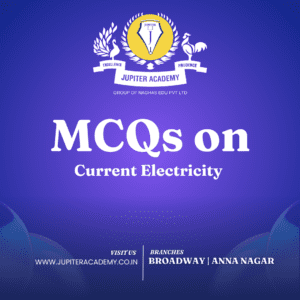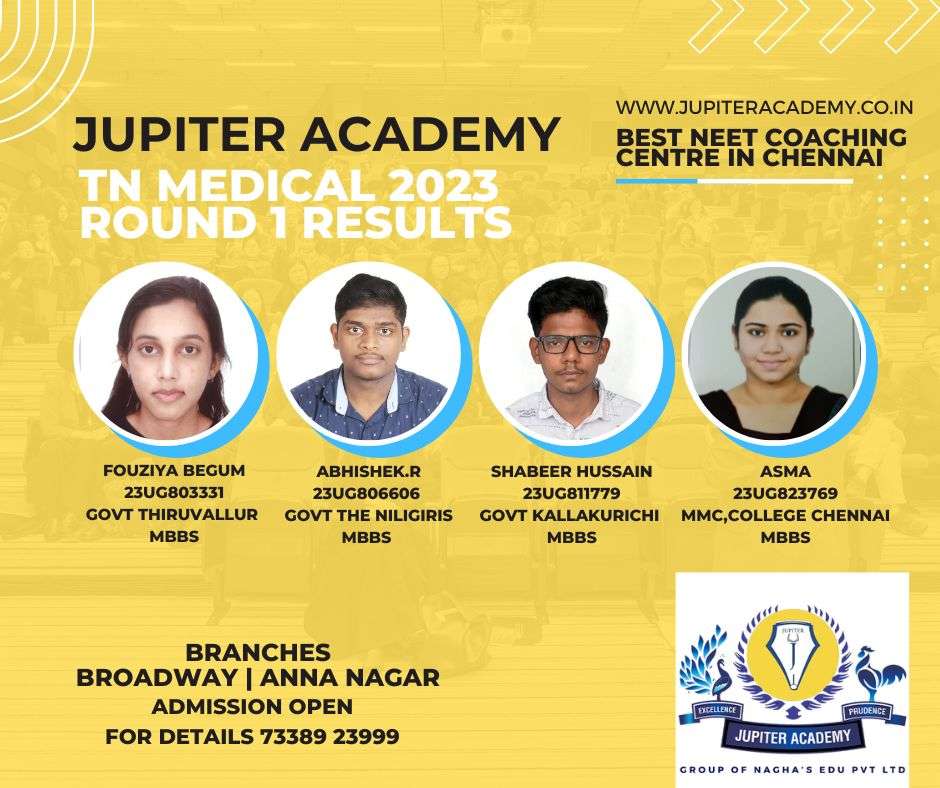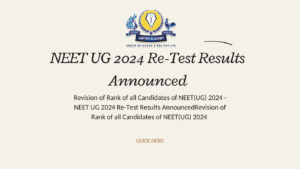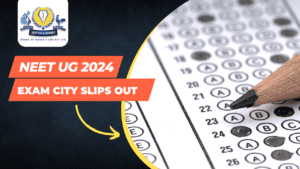NEET UG 2024 Re-Test result NTA Had Conducted the Re-test...
Read More
Current Electricity MCQs for NEET 2024
Current Electricity is one of the most important chapters in the NEET Physics syllabus. It accounts for around 10-12% of the total marks in the Physics section. The chapter covers a wide range of topics, including electric current, electric potential, electric resistance, electric power, and electrical circuits.
Thank you for reading this post, don't forget to subscribe!The importance of Current Electricity in the NEET Exam can be summarized as follows:
- It is a fundamental concept in Physics and is essential for understanding other topics in the syllabus, such as Electrostatics, Magnetism, and Electromagnetic Induction.
- A large number of questions are asked from this chapter in the NEET Exam.
- The concepts in this chapter are also relevant to other competitive exams, such as the JEE Mains and Advanced.
Therefore, it is important to study this chapter carefully and practice solving questions from it. Some of the important topics in Current Electricity that you should focus on include:
- Electric current and its properties
- Ohm’s law
- Electrical resistance and its factors
- Electrical power and energy
- Series and parallel circuits
- Kirchhoff’s laws
- Wheatstone bridge
- Meter bridge
Current Electricity MCQs for NEET 2024
NEET (National Eligibility cum Entrance Test) level multiple-choice questions on current electricity along with their answers. Here’s a set of questions for you:
**Question 1:**
In a metallic conductor, the drift velocity of electrons is directly proportional to the:
a) Cross-sectional area of the conductor
b) Length of the conductor
c) Electric field strength
d) Density of electrons
**Answer 1:**
c) Electric field strength
**Question 2:**
The resistance of a wire depends on its:
a) Length and cross-sectional area
b) Material and length
c) Material and cross-sectional area
d) Temperature and material
**Answer 2:**
a) Length and cross-sectional area
**Question 3:**
When a constant potential difference is applied across a conductor, the current in it:
a) Increases with time
b) Decreases with time
c) Remains constant
d) Fluctuates randomly
**Answer 3:**
c) Remains constant
**Question 4:**
The resistivity of a material is least dependent on:
a) Temperature
b) Nature of the material
c) Length of the material
d) Cross-sectional area of the material
**Answer 4:**
d) Cross-sectional area of the material
**Question 5:**
The relationship between current (I), voltage (V), and resistance (R) is given by:
a) V = I / R
b) I = V / R
c) R = I / V
d) R = V / I
**Answer 5:**
b) I = V / R
**Question 6:**
The electric power consumed by a device can be calculated using the formula:
a) P = V / I
b) P = I^2 * R
c) P = V * I
d) P = R / I^2
**Answer 6:**
c) P = V * I
**Question 7:**
The total resistance of two resistors connected in series is:
a) Equal to the sum of their resistances
b) Equal to the product of their resistances
c) Equal to the reciprocal of the sum of their resistances
d) Equal to the reciprocal of the product of their resistances
**Answer 7:**
a) Equal to the sum of their resistances
**Question 8:**
When resistors are connected in parallel, the total resistance:
a) Is equal to the sum of their resistances
b) Is equal to the product of their resistances
c) Can be calculated using the formula R_total = 1 / (1/R₁ + 1/R₂)
d) Is always larger than the resistance of any individual resistor
**Answer 8:**
c) Can be calculated using the formula R_total = 1 / (1/R₁ + 1/R₂)
**Question 9:**
The SI unit of electric charge is:
a) Volt
b) Ampere
c) Coulomb
d) Ohm
**Answer 9:**
c) Coulomb
**Question 10:**
Ohm’s law is not applicable to:
a) Conductors
b) Semiconductors
c) Superconductors
d) Insulators
**Answer 10:**
c) Superconductors
Remember to use these questions for practice and understanding. If you have any doubts or need further explanations, feel free to ask!
JEE Mains physics - MCQs
Here are some JEE (Joint Entrance Examination) level multiple-choice questions on current electricity:
**Question 1:**
The drift velocity of electrons in a metallic conductor is generally of the order of:
a) 1 m/s
b) 1 cm/s
c) 1 mm/s
d) 1 μm/s
**Answer 1:**
d) 1 μm/s
**Question 2:**
The conductivity of a semiconductor increases with:
a) Decrease in temperature
b) Increase in temperature
c) No change in temperature
d) Increase in resistivity
**Answer 2:**
b) Increase in temperature
**Question 3:**
A wire has resistance R. It is stretched to double its length. The new resistance will be:
a) R/2
b) R
c) 2R
d) 4R
**Answer 3:**
c) 2R
**Question 4:**
Three resistances of 2Ω, 3Ω, and 6Ω are connected in parallel across a battery of 12V. The current passing through the 2Ω resistor is:
a) 2A
b) 3A
c) 4A
d) 6A
**Answer 4:**
a) 2A
**Question 5:**
Two wires of the same material have their lengths in the ratio 1:2 and radii in the ratio 2:1. The ratio of their resistances will be:
a) 1:1
b) 1:2
c) 2:1
d) 4:1
**Answer 5:**
a) 1:1
**Question 6:**
In a meter bridge experiment, the null point is obtained at 40 cm from the end where the unknown resistance is connected. If the length of the wire is 100 cm, the value of the unknown resistance is:
a) 60 Ω
b) 40 Ω
c) 25 Ω
d) 10 Ω
**Answer 6:**
b) 40 Ω
**Question 7:**
The equivalent resistance between points A and B in the circuit shown is:
“`
R₁
A —-/\/\/\—- B
R₂ | R₃
\/
R₄
“`
a) (R₁ + R₂ + R₃ + R₄)
b) (R₁ + R₂ + R₃) // R₄
c) (R₁ + R₂) // (R₃ + R₄)
d) (R₁ // R₂) + (R₃ // R₄)
**Answer 7:**
c) (R₁ + R₂) // (R₃ + R₄)
**Question 8:**
A potentiometer wire of length 1 m has a resistance of 10 Ω. It is connected to a cell of emf 2V and internal resistance 1 Ω. The potential gradient along the wire is:
a) 0.1 V/m
b) 0.2 V/m
c) 0.5 V/m
d) 1 V/m
**Answer 8:**
a) 0.1 V/m
**Question 9:**
Two cells, each of emf 1.5V and internal resistance 0.2Ω, are connected in parallel to an external resistance of 5Ω. The current through the external resistance will be:
a) 0.15 A
b) 0.3 A
c) 0.6 A
d) 1 A
**Answer 9:**
b) 0.3 A
**Question 10:**
A wire of resistance R is cut into 5 equal parts. These parts are then connected in parallel. The equivalent resistance of this combination is:
a) R/5
b) R
c) 5R
d) R/25
**Answer 10:**
d) R/25
Feel free to ask if you need more questions or explanations for any of these questions!
Here are some tips for studying Current Electricity for the NEET & JEE Exam:
- Start by reading the relevant chapter in your textbook.
- Make sure you understand the basic concepts.
- Solve practice questions to test your understanding.
- Join a study group or take an online course to get help from other students and teachers.
- Create a study schedule and stick to it.
- Don’t forget to revise the chapter regularly.
With hard work and dedication, you can master the concepts of Current Electricity and score well in the NEET & JEE Exam.

JEE Advanced 2024 registration window opens at jeeadv.ac.in. Here is how to apply
JEE Advanced 2024 registration window opens The Indian Institute of...
Read MoreLast chance for Photo correction in NEET 2024 Forms
Last Chance for Photo Correction in NEET 2024 Forms! Don’t...
Read MoreNEET UG 2024 exam city slips out now
Registered candidates can download their city slips from the official...
Read MoreCurrent Electricity MCQs for NEET 2024 Current Electricity MCQs for NEET 2024 Current Electricity MCQs for NEET 2024 Current Electricity MCQs for NEET 2024 Current Electricity MCQs for NEET 2024 Current Electricity MCQs for NEET 2024 Current Electricity MCQs for NEET 2024 Current Electricity MCQs for NEET 2024 Current Electricity MCQs for NEET 2024 Current Electricity MCQs for NEET 2024 Current Electricity MCQs for NEET 2024 Current Electricity MCQs for NEET 2024 jee mains physics jee mains physics jee mains physics jee mains physics jee mains physics






